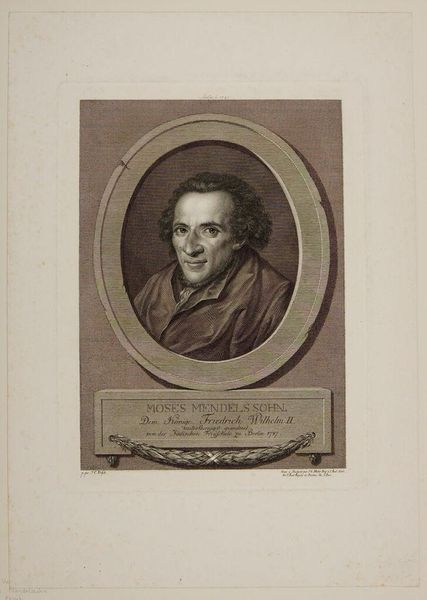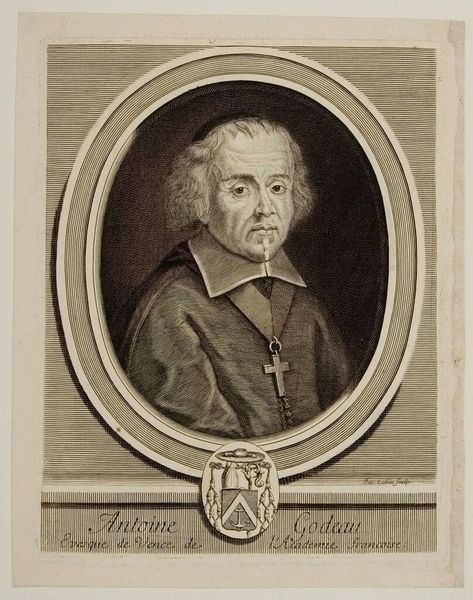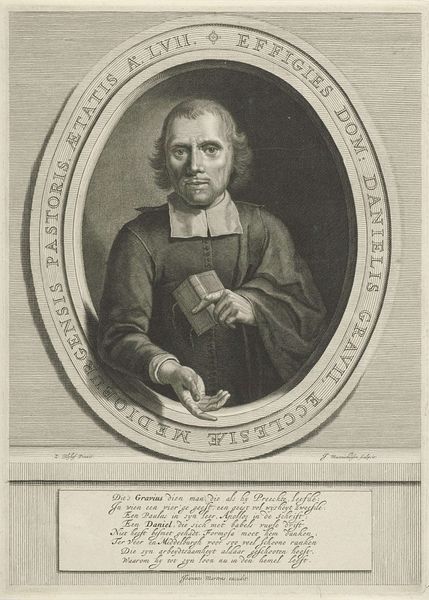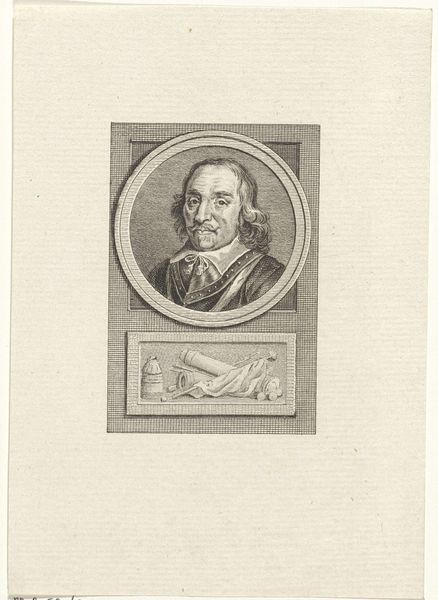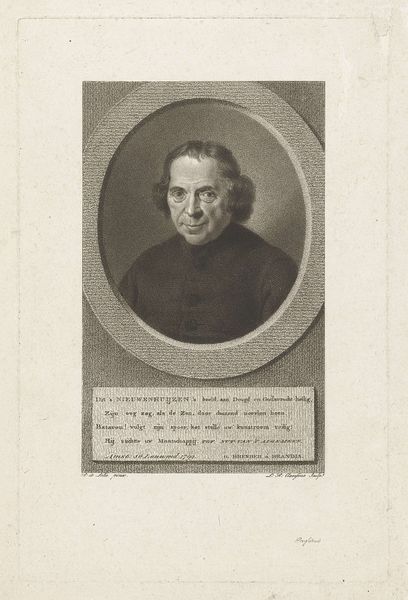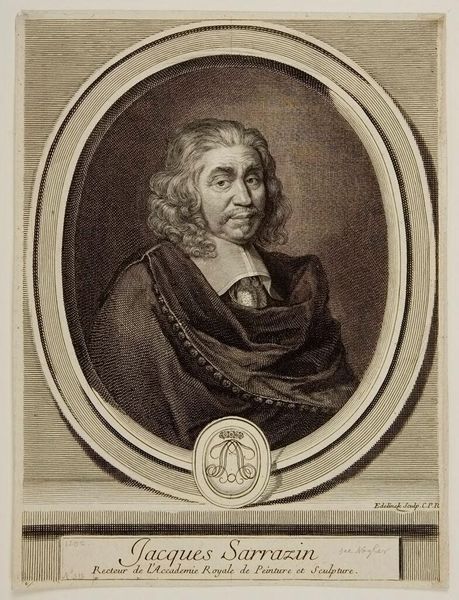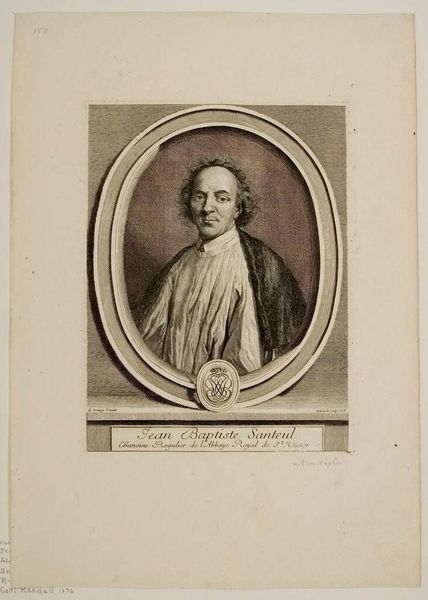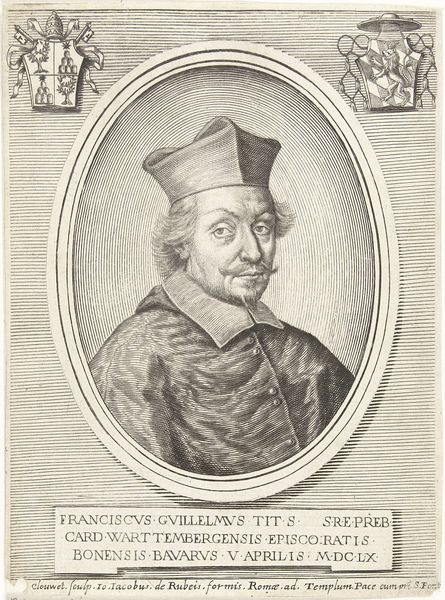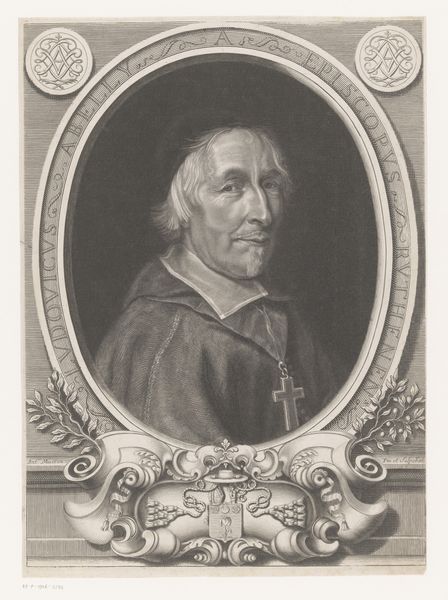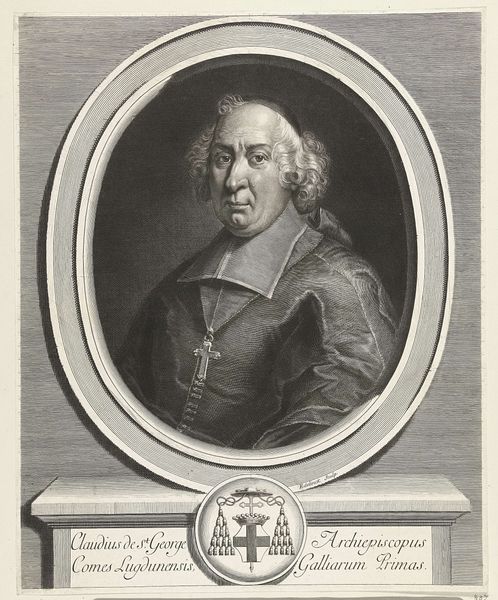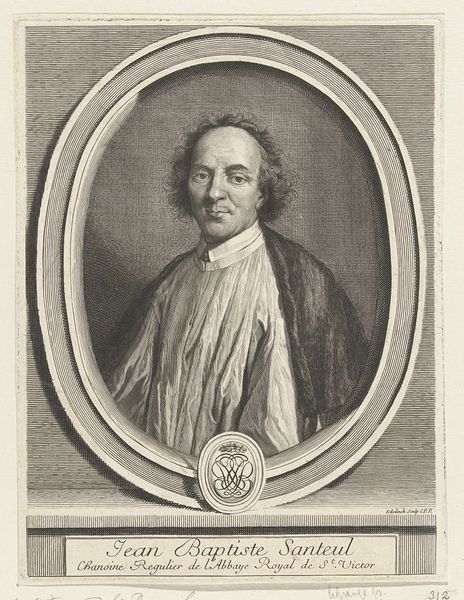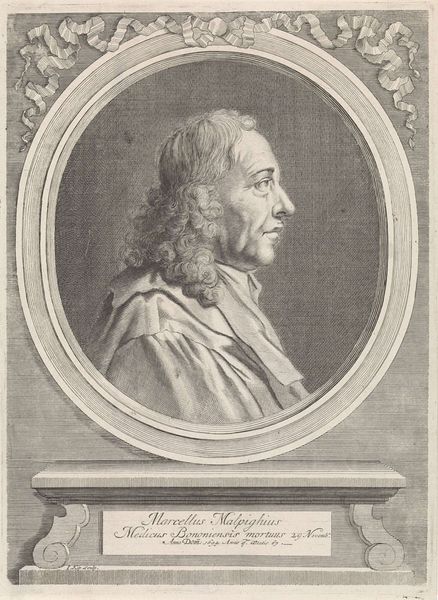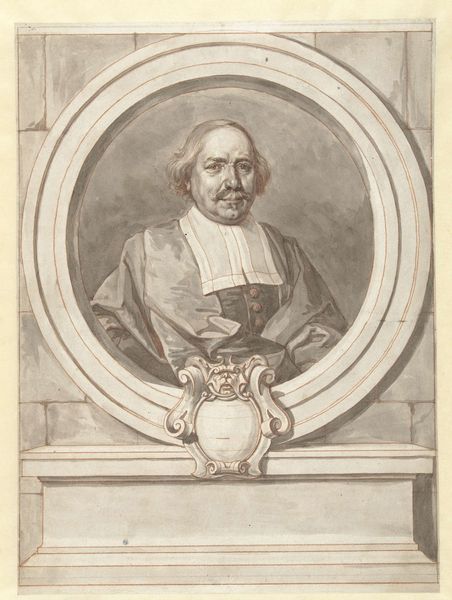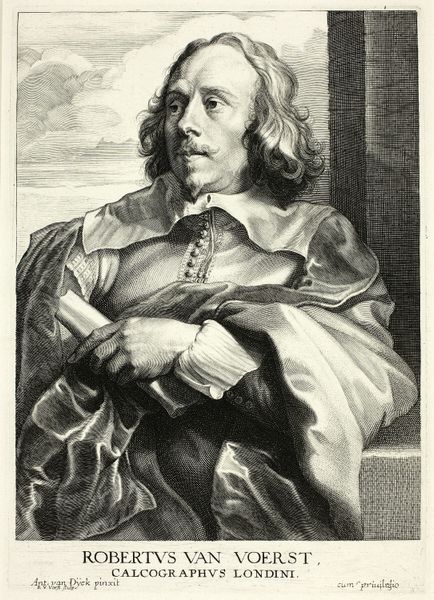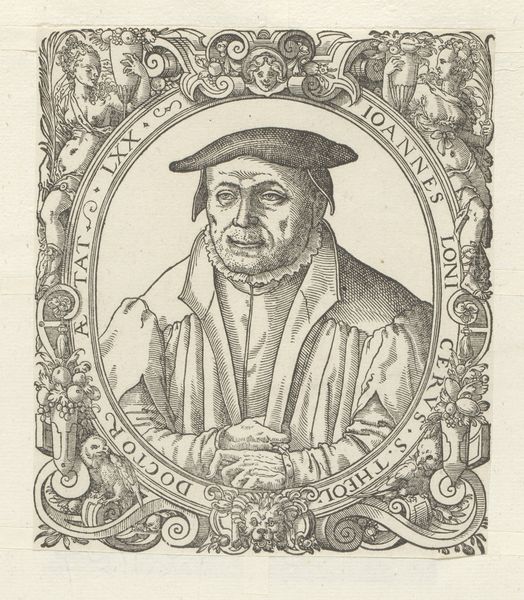
drawing, print, engraving
#
portrait
#
drawing
#
neoclassicism
# print
#
pencil sketch
#
charcoal drawing
#
male portrait
#
academic-art
#
engraving
Dimensions: height 267 mm, width 199 mm
Copyright: Rijks Museum: Open Domain
Editor: Here we have Samuel Amsler's 1820 engraving, "Portrait of Pius VII", currently held in the Rijksmuseum collection. It's quite a striking image; there's something so solemn and almost weary about his expression. What can you tell me about how this piece fits into the art of its time? Curator: Well, looking at this engraving through a historical lens, several things stand out. We see Neoclassical ideals reflected in the precise linework and the emphasis on clarity and form. But the choice of subject – a Pope – positions this artwork within the complex relationship between religious authority and political power during the post-Napoleonic era. How do you think this image would have functioned in the public eye? Editor: I guess it was intended as a representation of stability, perhaps? Reassuring people of the Church’s continued authority after a period of upheaval. Curator: Precisely! Engravings like this one played a crucial role in disseminating imagery and reinforcing particular narratives. Amsler's skill as an engraver allowed for widespread reproduction, making the Pope's image accessible and further cementing his public persona. Do you notice anything in the artistic decisions that reinforce these aims? Editor: Perhaps the composition, how it is more a likeness than something overly idealized? More humane than divine? Curator: Interesting observation. This touches upon the tension between the traditional iconography of the papacy and the emerging emphasis on individual character during the 19th century. Editor: So, it's not just a portrait of a religious figure, but also a reflection of shifting political and social dynamics? Curator: Exactly. Examining this portrait helps us to understand how art served as a powerful tool for negotiating authority and shaping public opinion during a time of immense change. Editor: That’s really fascinating; it has certainly changed how I view this piece! Thank you. Curator: My pleasure. I think considering the public role of art allows for a much more complete appreciation of pieces like these.
Comments
No comments
Be the first to comment and join the conversation on the ultimate creative platform.
